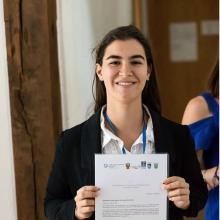
Assessing perceptions of the built environment in LMIC: adaptation of the NEWS-Y-IPEN in Mexican adolescents
Abstract Overview
Background: Active transportation represents an opportunity to promote physical activity in adolescents, especially in low- and middle-income countries (LMIC). Perceptions of the characteristics of the built environment can either limit or promote its use. However, Mexican adolescents’ perceptions have not been fully explored; furthermore, there are no culturally relevant instruments to measure these perceptions.
Purpose: To adapt and evaluate the Neighborhood Environment Walkability Scale for Youth for the IPEN Project (NEWS-Y-IPEN) in Mexican adolescents.
Methods: A cross-cultural assessment was conducted to determine relevancy of an adaptation of the NEWS-Y-IPEN questionnaire (Spain version) for the Mexican context among adolescents aged 15 to 20 years from a high school in Zapopan, México. The adaptation process involved researchers and adolescents reviewing and replacing unsuitable words for the Mexican context. Sociodemographic, socioeconomic, and active transportation information was collected via a REDCap questionnaire. Internal consistency of the five scales was assessed using Cronbach’s α. Factor structure of the instrument was examined with confirmatory factor analysis.
Results: A total of 735 students completed the questionnaire (M= 16.3 years). Only two NEWS-Y-IPEN subscales showed acceptable internal consistency: crime safety (α = 0.887) and neighborhood surroundings (α = 0.724). The five-factor model showed an acceptable fit to the data and factor structure (χ2 = 318.37, p < 0.001; CFI = 0.94; RMSEA = 0.046, 95% CI =0.040 a 0.050; SRMR = 0.049).
Conclusions: The adapted NEWS-Y-IPEN showed a good factor structure; nevertheless, only two of the five scales appeared to be reliable and useful for the Mexican context.
Practical implications: Assessment of adolescents' perception of the built environment needs context-suitable instruments. Developing culturally relevant methods for LMIC rather than adapting them from high-income countries may be a good alternative.
Funding: Programa para el Aseguramiento de la Calidad de los Posgrados (PROAC) – CONAHCYT, Universidad de Guadalajara, 2024.
Additional Authors
Name: Karla I. Galaviz
Affiliation: Indiana University at Bloomington
Presenting Author: no
Name: Edtna Elvira Jáuregui-Ulloa
Affiliation: Universidad de Guadalajara
Presenting Author: no
Name: Alejandra Jáuregui de la Mota
Affiliation: Instituto Nacional de Salud Pública
Presenting Author: no
Name: Rebecca E. Lee
Affiliation: Arizona State University
Presenting Author: no

